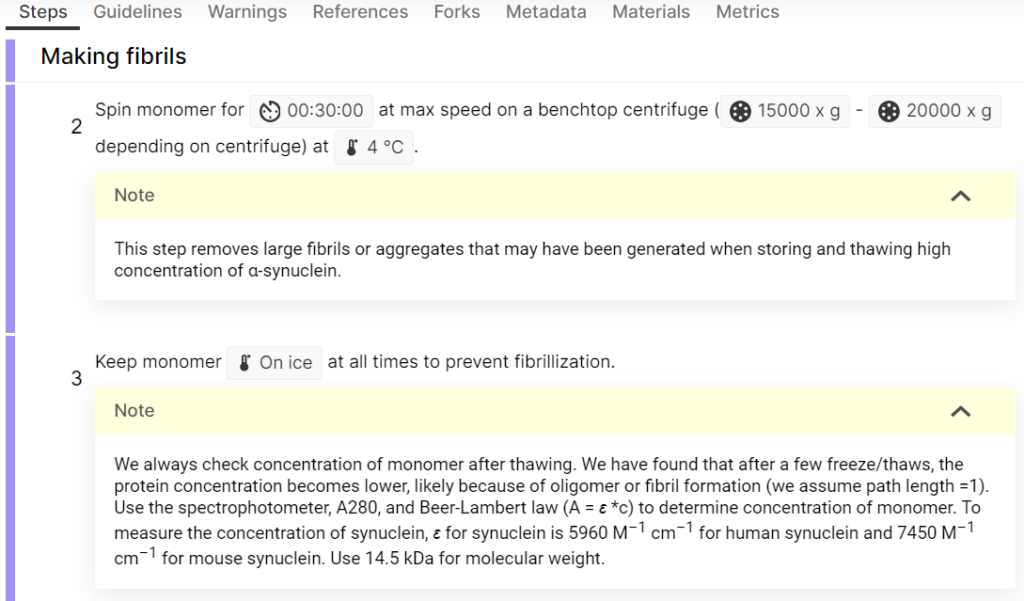Editor’s note: Today’s post is by Marcel LaFlamme. Marcel is Open Research Manager at PLOS.
Could 2024 be the year that methods sharing gets its turn in the spotlight? In January, Sweden joined its neighbor Finland in naming open research methods one of six priority areas in its national guidelines for open science. Meanwhile, researchers at the Charité in Berlin organized the inaugural Love Methods Week, encouraging colleagues to “love your methods before you love your data.” While contributors to The Scholarly Kitchen have long contended that reproducibility in research depends on detailed methods reporting, today a new cohort of advocates are making the case that methods matter.
In order to reuse the research data that publishers are increasingly expecting authors to share, readers need context on how these data were generated in the first place. Yet one initiative aiming to rerun experiments from widely cited life science papers found that none were described in sufficient detail to enable researchers to efficiently repeat them. While sharing detailed methods information cannot always eliminate what sociologists of science call task uncertainty, better reporting can make tacit knowledge explicit and cut down on research waste, reducing time and resources spent—and, in the case of in vivo research, animal lives taken—to reinvent the wheel. Sharing detailed methods openly also promotes equity by ensuring that the latest techniques aren’t only available to those inside or adjacent to elite institutions.
This month, a new report entitled “Promoting Reusable and Open Methods and Protocols (PRO-MaP): Recommendations to Improve Methodological Clarity in Life Sciences Publications” was issued by the European Commission’s Joint Research Centre. Developed by a working group of researchers, institutions, publishers, and funders and shaped by an extensive consultation process, the report includes recommendations for concrete actions that can be taken by each stakeholder group. This post summarizes the recommendations for publishers and editors, and invites all life science publishers to join this community-based effort.

What can publishers do?
The PRO-MaP recommendations begin from the premise that scientific journals should strive to publish articles that are fully reproducible and reusable. There are different elements of a published article that can contribute to this objective, and following recent discussions of the “atomization” of the scholarly record the recommendations acknowledge that some of these elements may not be part of the article itself. The recommendations are also specific to research in the life sciences, although publishers focused on other fields may wish to consider how the recommendations could be adapted to those areas of inquiry.
The methods section
Publishers can promote completeness in methods reporting by eliminating word limits for article methods sections and encouraging authors to describe, at length and in technical detail, exactly what they did. The expectation of textual novelty does more harm than good here, so publishers should specify that it is acceptable to recycle exact methodological descriptions from previous work with attribution. Where shortcut citations are used instead, authors should be expected to describe all modifications made to the cited method.
Publishers of subscription content can promote accessibility by moving methods sections in front of the paywall. Like citations and abstracts, methods are of sufficiently general value to justify exempting them from access restrictions. Editors should also ensure that methods are clearly formulated so as to be accessible to readers from different backgrounds.
Methods sections of life science articles are often closely tied to the use of materials such as antibodies, cell lines, model organisms, and plasmids. Publishers should recommend or require that authors use Research Resource Identifiers (RRIDs) to uniquely identify the materials and tools they used so that other researchers can work with the same inputs.
Associated protocols
While a complete and accessible methods section can provide the information that all readers need to assess the findings of a study, the level of detail needed by those who wish to reproduce the study’s results or reuse a technique in another context is better captured in a protocol. The word protocol has different meanings in different research fields, but the PRO-MaP recommendations refer to reusable, step-by-step protocols presenting the sequence of operations that have to be executed to complete a scientific procedure. This definition distinguishes protocols in PRO-MaP’s sense from study design protocols, which outline how a specific study will be carried out in the future.

Publishers should encourage all authors to post protocols in openly accessible repositories like protocols.io and Bio-protocol Exchange, which assign DOIs to protocols and have long-term preservation strategies. Increasingly, such repositories support versioning and forking, features that make it possible to retain a snapshot of the method that was used to generate a set of results as well as track how the method has since evolved. To support ongoing discoverability, publishers should signal their preference for the use of repositories instead of authors hosting protocols on lab websites or attaching them to articles as supplementary information.
The rest of the article
Other elements of the research article can also be enhanced to improve methods reporting. For instance, figures and tables reporting data should be accompanied by captions that clearly identify the relevant method used. Bibliographic references for shortcut citations should include any information needed to locate detailed information about the method within the cited resource, such as page numbers in books or location identifiers for ebooks. Article metadata should include a machine-readable Methods Availability Statement, which indicates whether an associated protocol exists and, if so, links out to it; responses like “methods are available upon reasonable request” should not be permitted, as research on data sharing shows that such requests are inconsistently and inequitably fulfilled.
The road to implementation
It is likely that no life science publisher follows all of the recommendations summarized above, and the PRO-MaP working group does not expect any organization to immediately implement each one. Indeed, it’s worth celebrating the strides that publishers have already made toward improving methods reporting, from early print-based handbooks and manuals to the structured methods formats required by Cell Press and EMBO to PLOS’s recent efforts to measure protocol sharing at scale. But we in the working group want to call on our colleagues across life science publishing to engage with the PRO-MaP recommendations by adopting a few feasible items now, while formulating longer-term plans to implement the more challenging provisions.
In some areas, implementation may look like doing what your organization is already doing: enforcing post-publication policies on the availability of materials, or issuing corrections when mistakes in methods sections are discovered. But where new policies and practices are being introduced, consider a range of tactics for building awareness, from updating text-based guidelines to offering badges or other visual cues on published articles. Adding a requirement does not by itself necessarily improve the quality of reporting, so human checks at the appropriate stage of the editorial process may be needed in conjunction with automated tools. Our appeal is to monitor and share the results of what you’ve tried, so that as a sector we can converge around best practices and address unintended consequences.
As with other issues affecting the integrity and utility of the scholarly record, publishers cannot improve methods reporting alone. Individual researchers have a role to play, by maturing their processes of documentation and embracing the work this entails as part of doing good science. Research funders can make protocol sharing a condition of the grants they award—just as many have done for data sharing—and direct review panels to consider plans for reproducibility as part of evaluating a proposal. Institutions including departments can provide training and, crucially, reward reusable and open methods and protocols as part of their degree granting, hiring, and promotion processes. Together, we can bring about lasting shifts in research culture and practice that improve methods reporting in the life sciences and beyond. Only by concerted action will we succeed in making research publications more reproducible and reusable.
Acknowledgments
Thanks to Andy Collings, Bronwen Dekker, Alison Mudditt, Bernd Pulverer, and Tracey Weissgerber for their feedback on an earlier version of this post.
Discussion
1 Thought on "Guest Post: Improving Methods Reporting in the Life Sciences"
It’s great to see a focus on planning and conducting research, rather than just on reporting, in the struggle to improve validity, reproducibility and translatability of preclinical research! This is something that we who have managed animal facilities for many years have long tried to emphasise. Since this post is in the Kitchen, I can use my favourite expression in this connection: you can’t improve a burnt cake by a better description! You have to go back to the kitchen and change the baking time and maybe some of the ingredients.
As a result of discussions with scientists, animal technicians, veterinarians and regulators over a 20-year period, we published the PREPARE guidelines to help scientists think about all the factors that can affect the quality of their animal research. The PREPARE checklist is available in 35 languages and is supported by a website with links to specific guidance on each topic. https://norecopa.no/PREPARE



